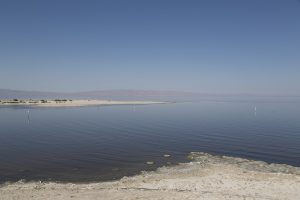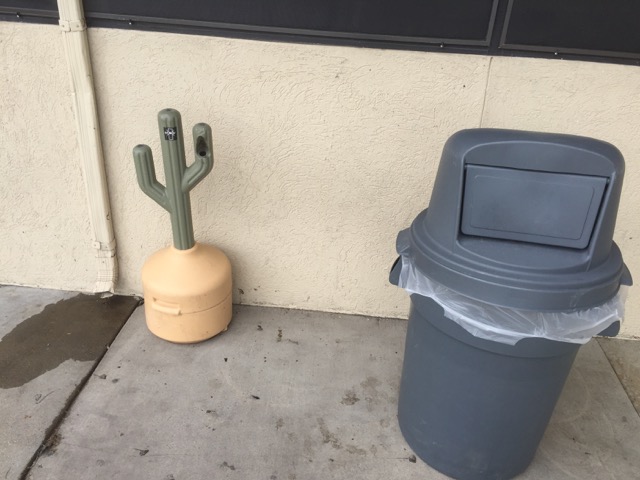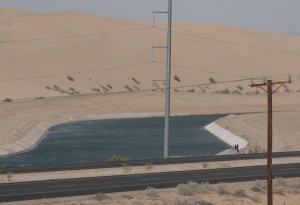While I was writing my book about the future of Colorado River water management, I joked about my efforts to leave the Salton Sea out of the story. It was only sort of a joke. The problems of the Salton Sea, an inland water body fed by agricultural drainage from the Imperial Valley, are an integral part of the Colorado River story. As we pursue efficiency, agricultural drainage shrinks. And so, therefore, does the Sea.
My desire to leave the Salton Sea out of the book was in part a matter of the practical constraints of writing this particular book. The problems of the Sea are enormously complex, and every time I tried to write the story it failed in a blind alley with a heap of linguistic garbage. My Island Press editor Emily Turner Davis and I were trying to craft a short book. The Salton Sea did not lend itself to that.
There’s a layer of complexity to the Salton Sea problem that both made it hard to write about but that also illustrates why it’s a hard problem for water managers to sort out. The institutional plumbing we’ve built over the last century to manage water is about managing water. That sounds like I’m stating the obvious, but it has an important implication: we’re not good at thinking about and coping with knock-on effects of water management decisions on non-water systems. Often, our solutions come at the expense of what economists would call “externalities”.
The environmental piece of this is obvious, and we’re slowly learning to grapple with it. When we remove water from where it used to sit or flow, the environment is changed in ways that we increasingly view as detrimental (fish die, springs dry, cottonwoods whither, etc.). The options for bringing those watery values into the institutional plumbing are narrow, but we’re getting the hang of them. Environmental management is increasingly incorporated into water management.
But the most significant problem caused by a dwindling Salton Sea may be a public health issue. As the Sea shrinks, exposed shoreline flats are dust storms waiting to happen, creating filthy air and a public health risk. (See Michael Cohen’s Hazard’s Toll, and the Salton Sea Initiative for summaries.) Importantly, the most vulnerable population here is poor. We simply lack the institutional tools to incorporate public health into water policy decision making – all the more so when the people hurt are poor. Public health people speak a different language, go to different meetings, hang out in different hotel bars.
The current scheme for reducing water use in Imperial includes a trigger point that would lead to significant reduction in ag runoff and a shrinking sea beginning Dec. 31, 2017. That’s not far away. The water use piece is crucial to balancing California’s water books. Without those Imperial reductions, less Colorado River water would be available to municipal Southern California. A loss of water supply reliability there would increase pressure on the Sacramento-San Joaquin Delta, the other source of Southern California’s water.
So this is a statewide problem, but the poor folk of Imperial are being asked to bear a disproportionate burden in its solution.
There are three possible outcomes:
- The deal to reduce ag water use in Imperial could collapse. By reducing the reliability of Southern California’s Colorado River supplies, this would place enormous pressure on California’s water system state wide.
- The deal to reduce ag water use could hold, and the shrinking Salton Sea would leave exposed shoreline, create toxic dust and a public health threat. The burden of solving California’s water problems thus would fall on one community in particular.
- Those who benefit – the residents of the state of California as a whole – could fund the mitigation measures necessary to manage the impacts of a shrinking sea, creating habit and dust control measures.
My preference is the third option. Time is running short.
And for what it’s worth, my efforts to leave the Salton Sea out of my book failed. It required some crushing simplifications, but it remains a short book.



